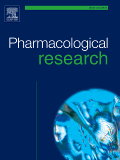
“Post-Traumatic Stress Disorder (PTSD) is a psychiatric chronic disease developing in individuals after the experience of an intense and life-threatening traumatic event. The post-traumatic symptomatology encompasses alterations in memory processes, mood, anxiety and arousal.
There is now consensus in considering the disease as an aberrant adaptation to traumatic stress. Pharmacological research, aimed at the discovery of new potential effective treatments, has lately directed its attention towards the “so-called” cognitive enhancers. This class of substances, by modulating cognitive processes involved in the development and/or persistence of the post-traumatic symptomatology, could be of great help in improving the outcome of psychotherapies and patients’ prognosis.
In this perspective, drugs acting on the endocannabinoid system are receiving great attention due to their dual ability to modulate memory processes on one hand, and to reduce anxiety and depression on the other.
The purpose of the present review is to offer a thorough overview of both animal and human studies investigating the effects of cannabinoids on memory processes.
First, we will briefly describe the characteristics of the endocannabinoid system and the most commonly used animal models of learning and memory. Then, studies investigating cannabinoid modulatory influences on memory consolidation, retrieval and extinction will be separately presented, and the potential benefits associated with each approach will be discussed.
In the final section, we will review literature data reporting beneficial effects of cannabinoid drugs in PTSD patients.”
http://www.ncbi.nlm.nih.gov/pubmed/27456243





